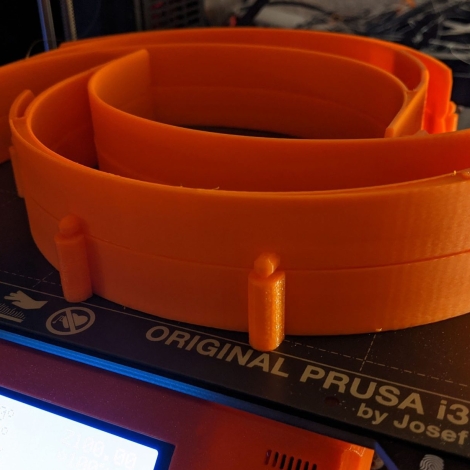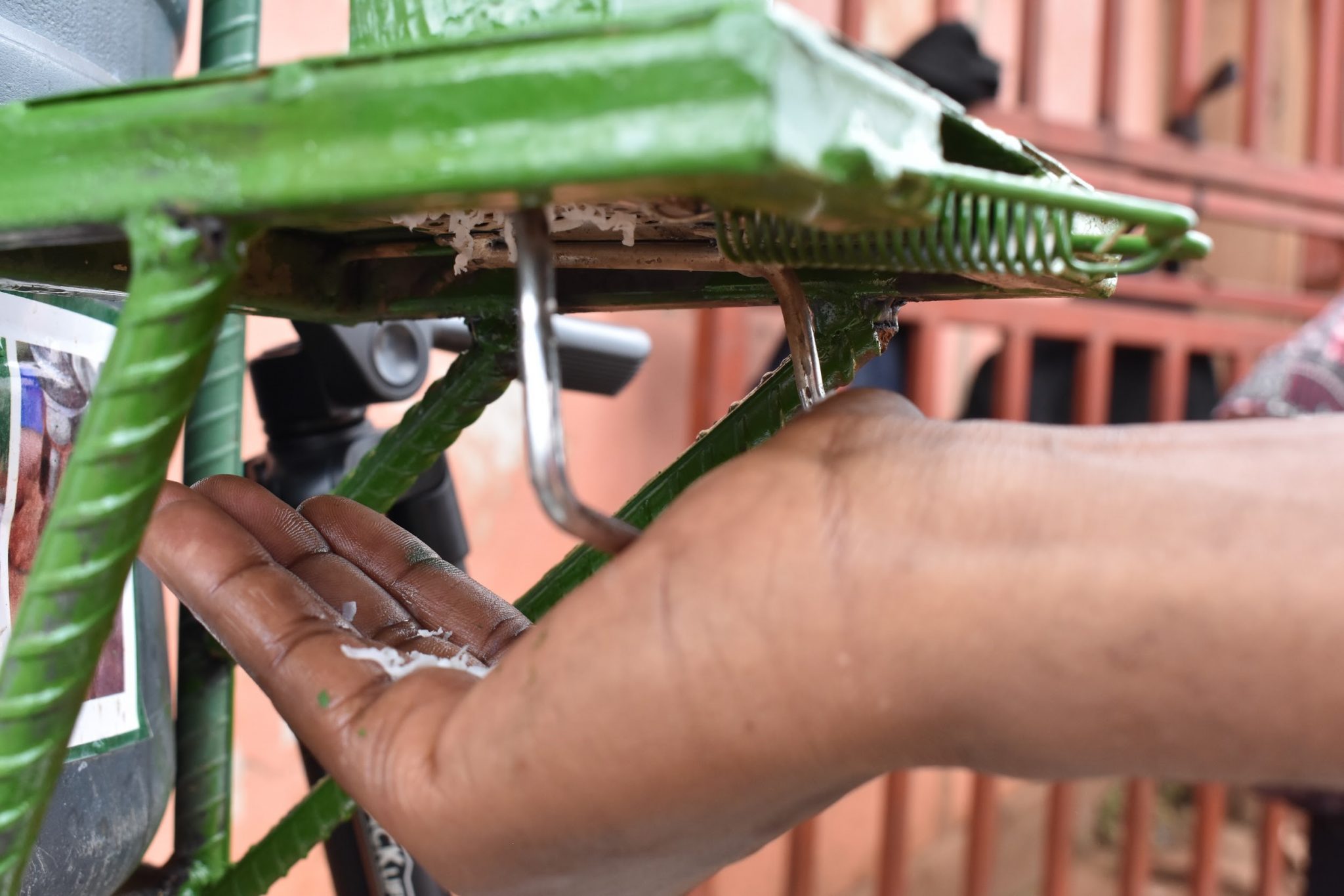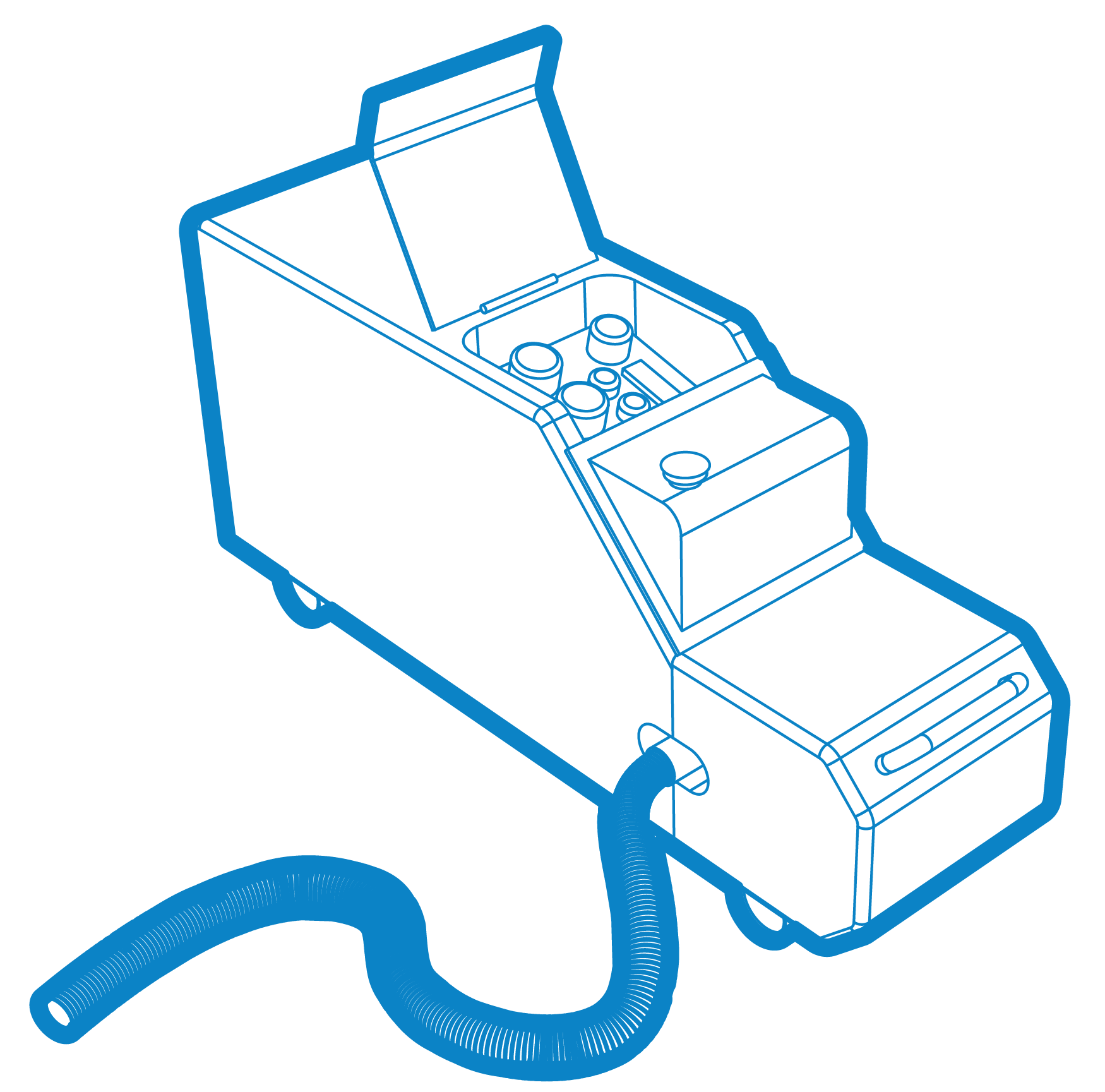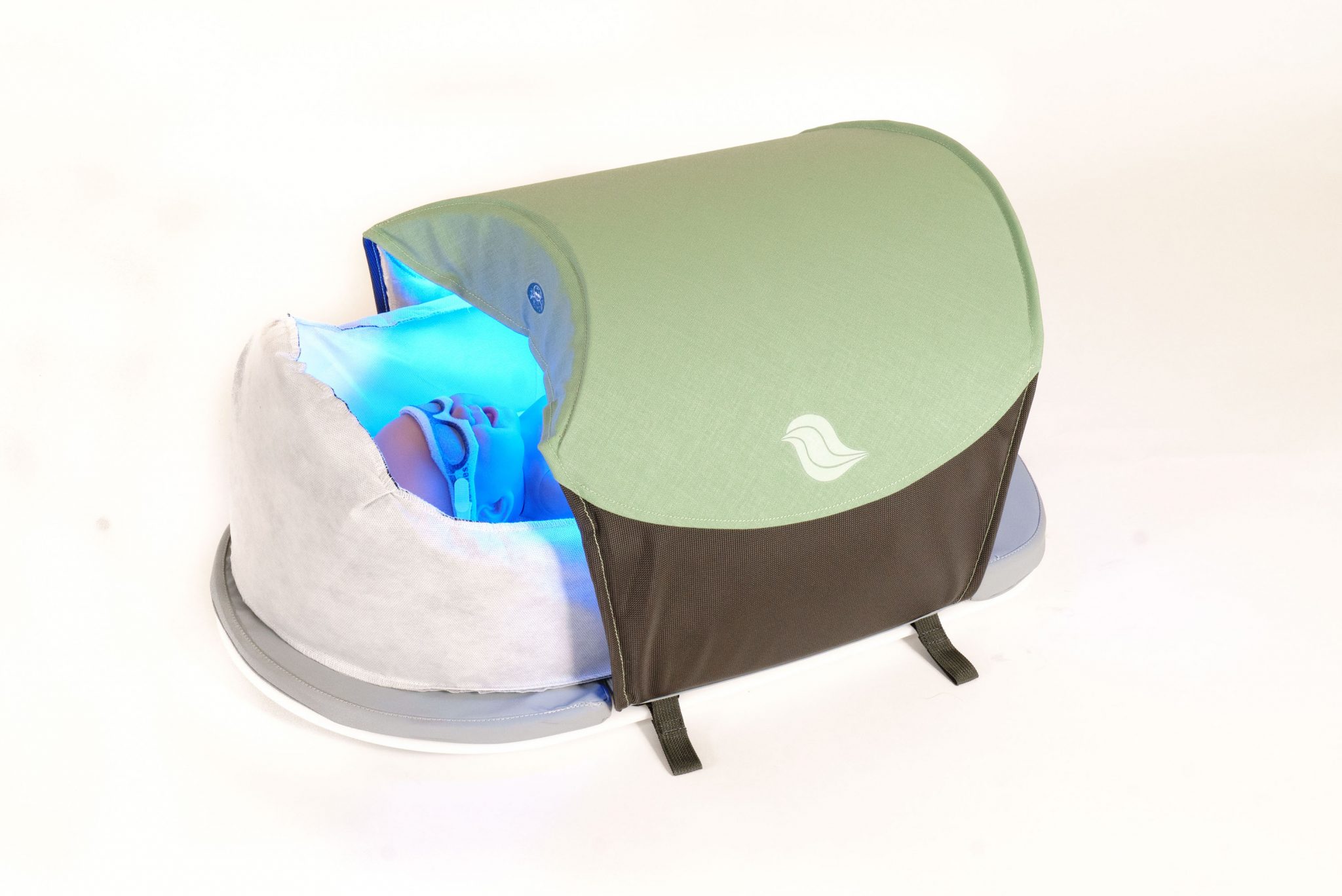A solar-powered water desalinator, a passive irrigation controller and cooking fuel made from used diapers made our list of promising prototypes to watch this year.
We polled our network of design and engineering experts for their recommendations. We also dipped into the successful design challenges and awards we hosted in 2020. To make the list, these prototypes were selected by our expert network and they are in development or have undergone a recent upgrade. These are the promising prototypes to watch in 2021. But first…
What we missed: ventilators and PPE took on new prominence in 2020
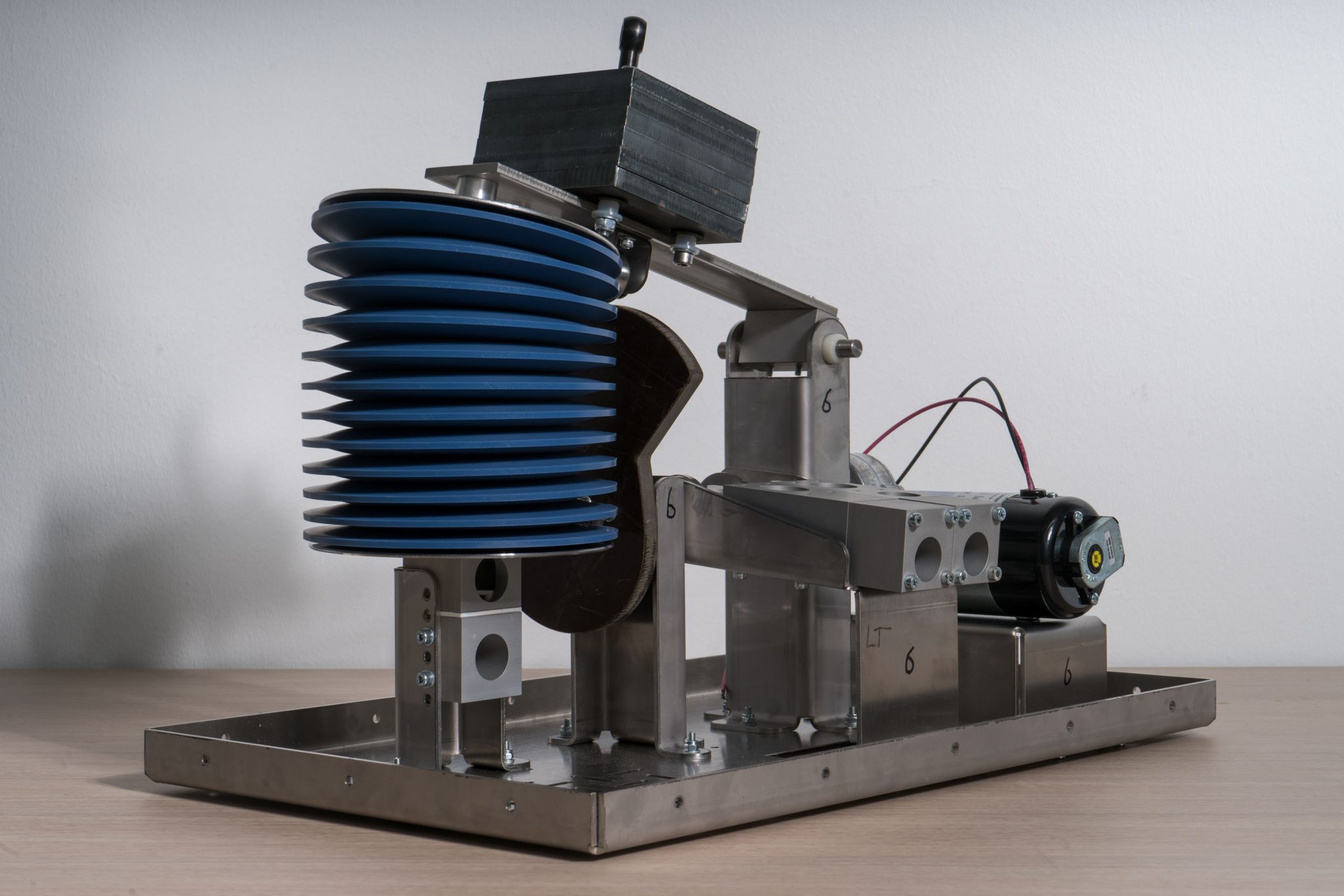
This ventilator is based on a design last used in the 1960s and salvaged from a museum, developed by researchers at Delft University of Technology in Delft, Netherlands.
At the start of 2020, we failed to predict the importance of innovations in the design and manufacture of medical equipment. Dozens of organizations and thousands of people rose to the challenge precipitated by the coronavirus pandemic with new designs, and reinvigorated old designs. Manufacturers and hobbyists deployed their 3D printers to restock depleted global supplies of personal protective equipment, and replacements for worn-out parts of medical devices. Innovation in standards enforcement for manufactured gear and new designs helped streamline the rollout.
Read: Promising Prototypes to Watch in 2020
Manufacturers in the United States turned to America Makes, the US National Additive Manufacturing Innovation Institute. Working with the US regulatory body the Food and Drug Administration and other entities, America Makes built a repository of requests from healthcare providers and medical device designs from additive manufacturers (3D printers).
“This is a movement underway to provide manufacturers with the standard designs they may need to produce medical devices and equipment,” Senior Director of Strategy and Innovation at the American Society of Mechanical Engineers, told Engineering for Change (ASME is E4C’s parent organization).
In 2020, we followed the development of 3D-printable face shields and a low-cost ventilator based on a design last used in hospitals in the 1960s.
Read: A COVID-19 Ventilator for Everyone
Read: Ensure 3D-Printed Medical Devices Adhere to Standards
View: Virtual Salon: Open-Source, 3D-Printable Medical Equipment Meets Global Shortages
Passive Irrigation Controller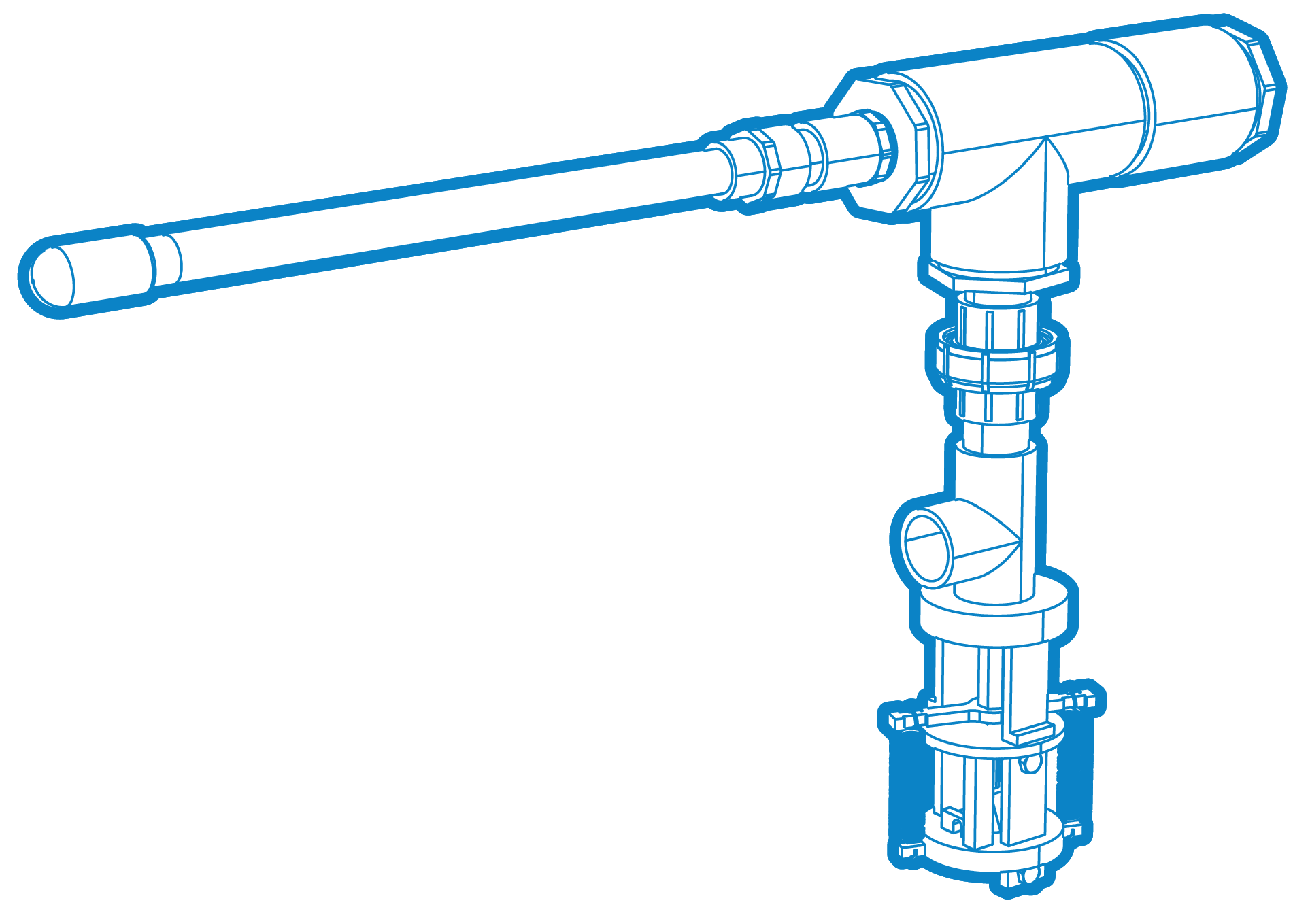
PICS is a Passive, non-electric Irrigation Control System, that opens valves to water crops when the soil is dry. Drying soil generates suction pressure that opens the device’s valve, then when the soil is moist enough, pressure drops and the valve closes. Corridor Water Technologies, a design team at the University of Toronto is developing the prototype. PICS won the USA arm of the 2020 Innovation Showcase by the American Society of Mechanical Engineers (ASME ISHOW-USA).
PICS at Corridor Water Technologies
A better soap dispenser
A soap dispenser built around a spring-loaded cheese grater is simple, affordable and already scaling up to serve 200 locations around the capital of Uganda. Ali Kabona, a 25-year-old telecommunications engineering student at Makerere University in Kampala, developed the dispenser for a design contest hosted by Response Innovation Lab in Kampala. Our friends at Engineers Without Borders – USA brought it to our attention. With the pandemic pressing the need to provide handwashing soap in public places, EWB–USA partnered with Response Innovation Lab to field ideas from local innovators, and this simple, affordable design is the result.
Read: Soap Plus a Cheese Grater Makes an Award-Winning Design for Handwashing in Kampala
Apü üya Wüin water desalination system
A water desalination system coupled with community engagement strategies could finally reach that elusive goal of technology uptake. Apü üya Wüin- the Guardian of Water, was developed specifically for, and with, Parenskat communities in the Guajira region of Colombia and includes materials to explain the how and why of water desalination. This system won the Clean Water Track of the Siemens Design Challenge, the inagural contest we hosted in partnership with the global engineering and design firm Siemens.
“This team in particular focused on community engagement. And not only as a single snapshot. They didn’t only go into the community and do a survey. They literally made the community part of the process from the beginning all the way through to the community actually co-creating and co-owning improvement to that process,” Dan Bena, a judge for the challenge, Sr. Advisor to Safe Water Network and former Corporate Water Steward for PespsiCo, said when announcing the winner.
As the team explains in the one-minute video pitch below, their device treats four liters of brackish water per day. It is also designed for distribution. The device breaks down to fit into a 1x.3-meter flatpack for shipping, and it can be assembled by anyone without the requirement of technical expertise. The team took the “elevator pitch” moniker literally, quickly describing their idea while standing in an elevator.
Read: Two Human-Centered Designs Win the Innovate for Impact Siemens Design Challenge
EcoLife Cold Room
EcoLife’s cold storage system won the Zero Hunger Track of the Siemens Design Challenge. The team is a partnership of innovators in Uganda and the United States that developed a solution to the high losses of crops after harvest in low-income and off-grid communities.
“EcoLife is working alongside off-grid farmers to create a cold room to contribute to the sustainable development goal of Zero Hunger. Our innovation lies within its one-of-a-kind wall panels, which combine structure, insulation and thermal energy storage. The cold store is made from locally available materials, so it is affordable and easy to maintain. And the thermal energy system is off-grid compatible,” Kyle Gaiser says in his pitch video.
Read: Two Human-Centered Designs Win the Innovate for Impact Siemens Design Challenge
Jalodbust human-waste disposal system
JALODBUST is a portable, battery operated fecal sludge processing and cleaning machine. When vacuum trucks and dewatering pumps have done their work, this device cleans up the settled sludge left behind in septic tanks and manholes. It weighs 30kg, runs a 200-500 watt motor off a 24 volt, 40 AH battery. It processes up to 800 liters of sludge per hour, roughly 2500 liters per battery charge. It employs a shockwave to agitate densified sludge and a 400psi water jet to liquify sludge.
The device is particularly timely for underserved Indian communities. People clean sewers and household septic tanks by hand in some regions of the country. The job is called “manual scavenging,” and it varies from hauling buckets of human waste away from septic tanks to stripping down and plunging into overflowing manholes to unclog and clean them.
JALODBUST won ISHOW-INDIA 2020, and it is one of the promising prototypes to watch this year.
JALODBUST at ASME ISHOW-India 2020
Poseidon harnesses energy from traffic
The weight of thousands of vehicles on busy roads could be converted into energy to drive water pumps, and a new venture is developing the technology to do it. Two graduates of the Technical University of Mombasa, Kenya co-founded Poseidon Pump Systems with an idea for putting moving vehicles to work as water pump energy. The company won a spot in the social start-up incubator Kenya Climate Innovation Center (KCIC), a partner of E4C. The team demonstrated the concept, pictured above, and they are now developing their prototype.
Read: How Poseidon Pump Systems Is Harnessing Energy from Moving Traffic
Leafy Life turns dirty diapers into cooking fuel
The Leafy Life startup is also an alum of the Kenya Climate Innovation Center’s accelerator, developing a proprietary system for chemically converting used diapers and sanitary pads into a clean-burning fuel gel. The gel could replace dirtier cooking fuels commonly used in Kenya and other countries, which include firewood, parafin and charcoal.
“Our fuel gel is not only cleaner but cheaper than conventionally used fuels. It has enhanced longevity for burning, and its flame is even hotter. This gel guarantees convenience to our customers. Our company has partnered with two community-based organizations and two international organizations to propel the projected goal of recycling at least 2000 kg of used diapers daily,” the design team writes on their website.
Read: Africa Sustainability Matters | Chemistry Graduate Strikes Liquid Gold from Used Diapers
Bili-hut neonatal phototherapy system
A small trial of Bili-hut, a home phototherapy treatment for infants diagnosed with jaundice, found that the device treated the condition in an average of 16 hours. The manufacturer, a Boston, Massachusetts-based startup called Little Sparrows Technologies, has developed versions of the device for deployment in emerging economies as well as the United States, where the trial took place.
“The bili-hut™ is ultraportable, highly effective solution to treat jaundice wherever the baby is. Severe neonatal jaundice does not know geographic boundaries and given that 14 million newborns worldwide are affected each year, I felt it was important to develop an effective phototherapy solution that could overcome barriers to access such as portability and operation in areas with an unreliable power grid,” Dr. Donna Brezinski, who heads Little Sparrows, told E4C in an interview in 2019.
Household farming system
Growing food indoors at home may become easier with Greenway Inc’s Household Farming System. The system is self-watering, self-draining and keeps pests away with a unique insect repellent light. Each set of trays and lights can grow up to 60 shallow-root crops. Stephen-David Longe, head of Greenway, was nominated as one of the Rising Stars at Impact.Engineered 2020, the annual event that E4C hosts with ASME. See the startup’s pitch for their farming system above.
Do you know of a prototype in development that we should keep an eye on this year? Please mention it in the comments. We read each one.
